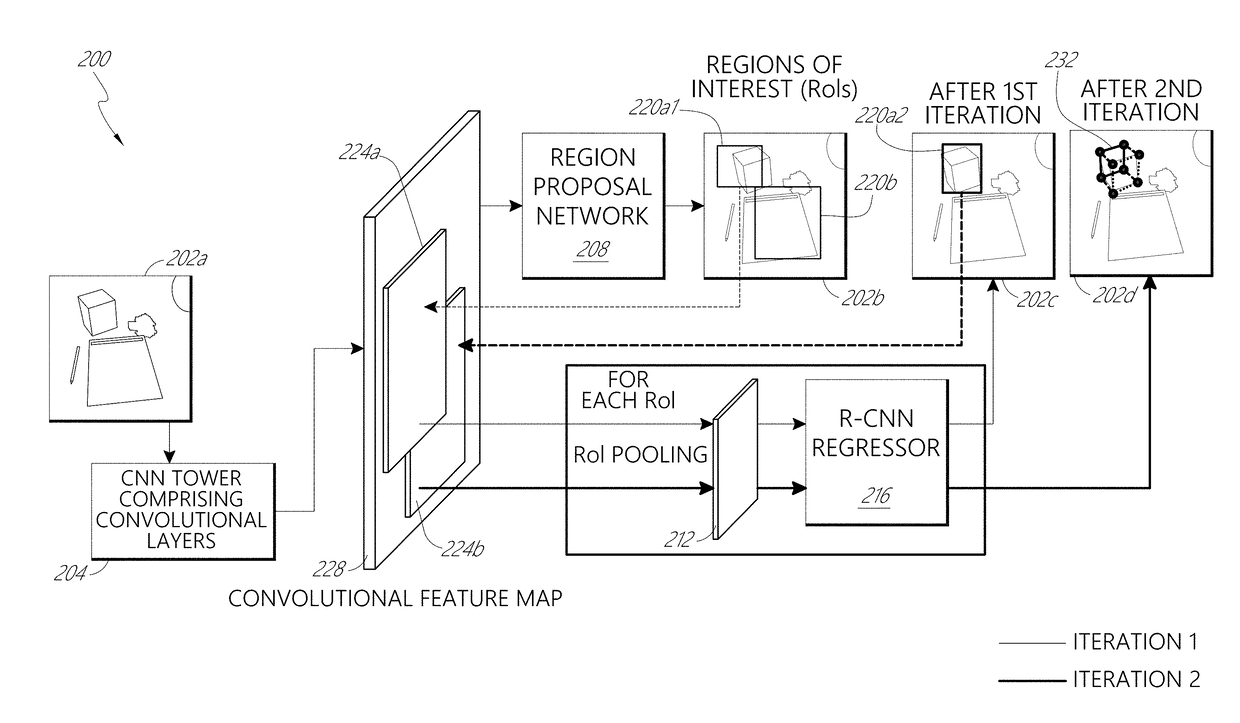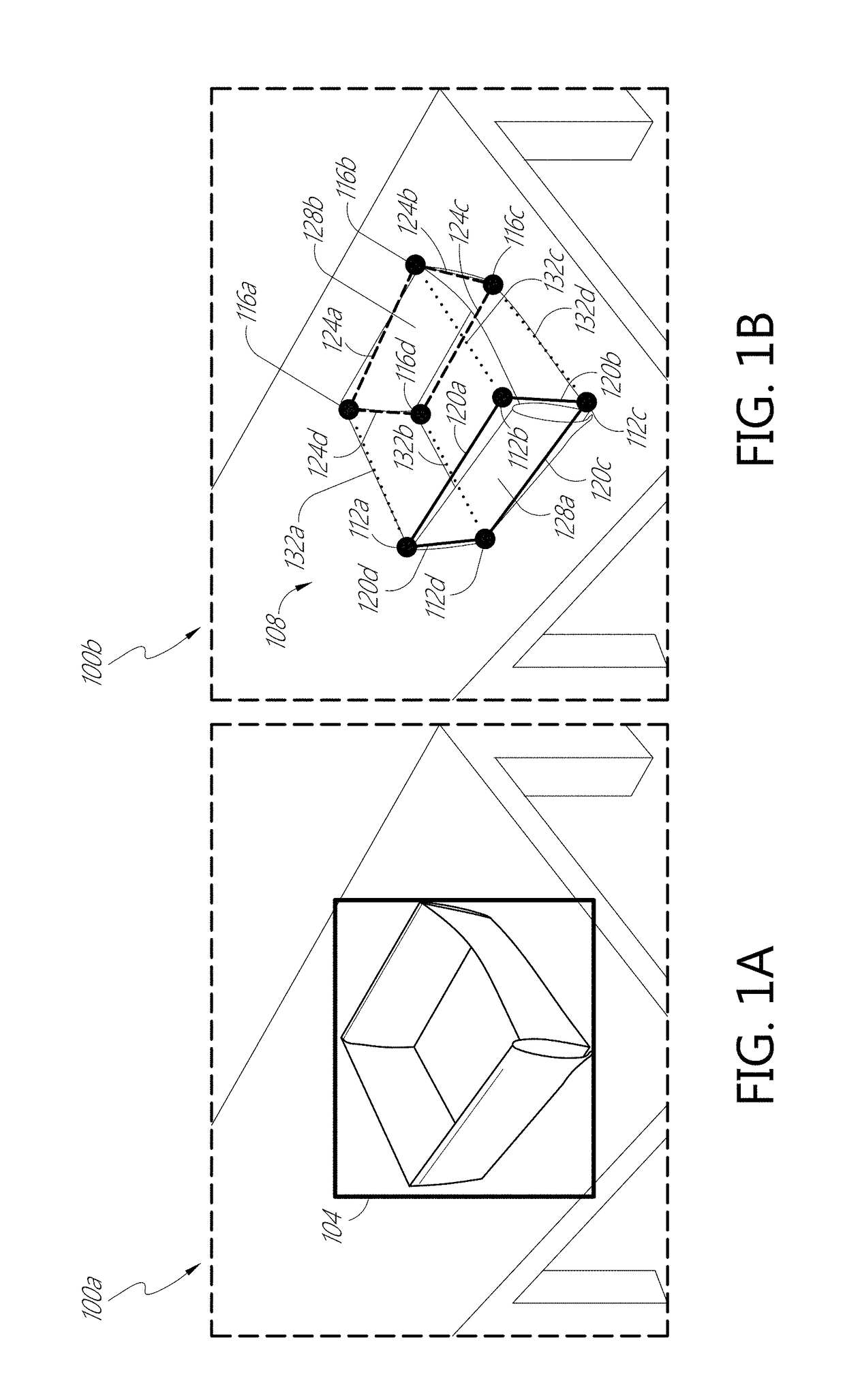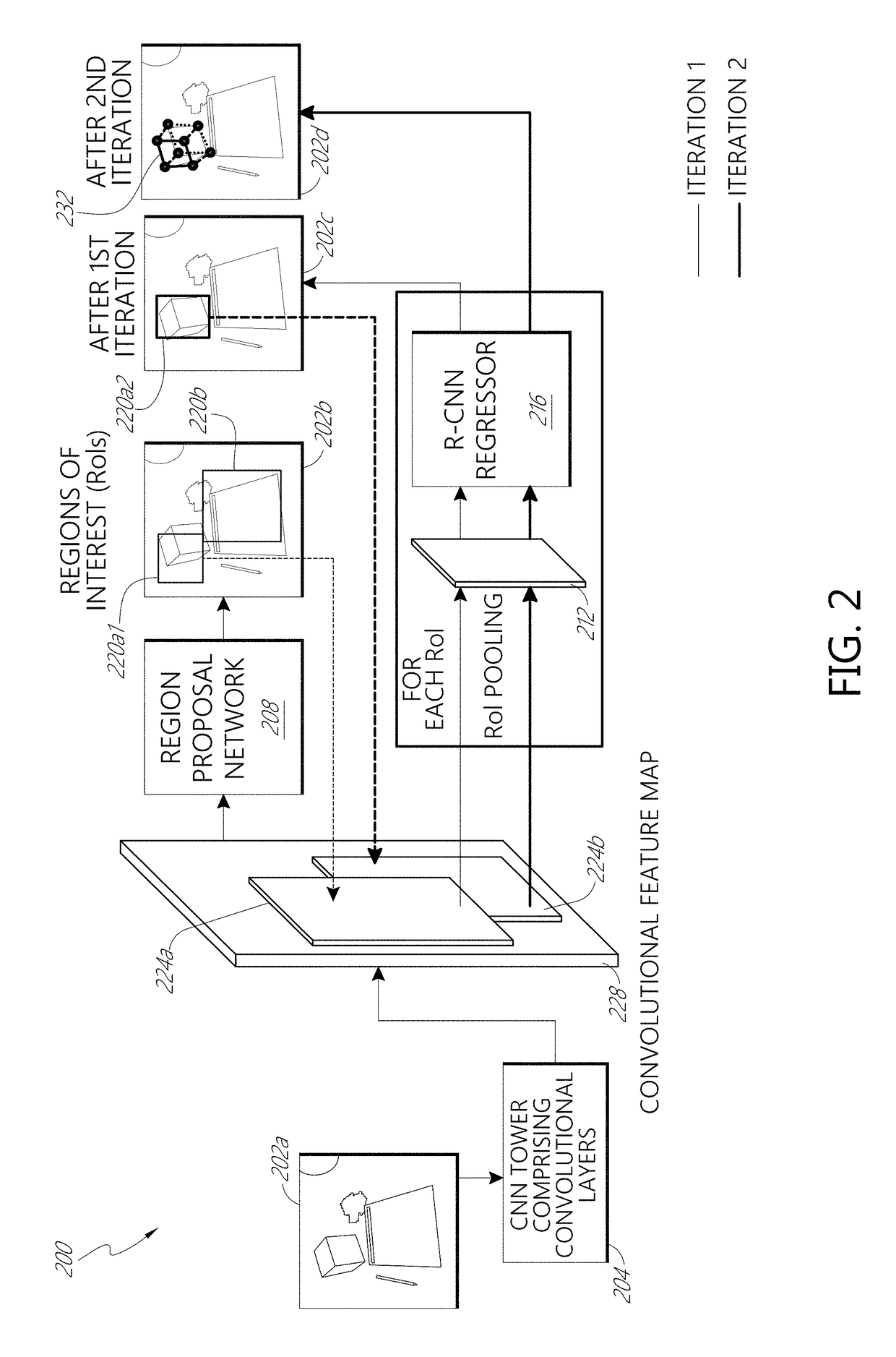Deep learning system for cuboid detection
- Summary
- Abstract
- Description
- Claims
- Application Information
AI Technical Summary
Benefits of technology
Problems solved by technology
Method used
Image
Examples
example cuboid
Network Architecture and Loss Function
[0034]FIG. 2 depicts an example architecture of a cuboid detector. The cuboid detector 200 can include one or more of the following components: a convolutional layers 204 (also referred to herein as a CNN tower), a Region Proposal Network (RPN) 208, at least one pooling layer 212, or one or more fully connected layers 216 (e.g., a regional CNN (R-CNN) regressor (or classifier)). The pooling layer 212 and the fully connected layers 216 can implement iterative feature pooling, which refines cuboid keypoint locations. The R-CNN can be a Faster R-CNN.
[0035]The cuboid detector 200 can implement a deep cuboid detection pipeline. The first action of the deep cuboid detection pipeline can be determining Regions of Interest (RoIs) 220a1, 220b, in an image 202a where a cuboid might be present. The Region Proposal Network (RPN) 200 can be trained to output such RoIs 220a1, 220b as illustrated in the image 202b. Then, regions 224a with features correspondin...
example performance
[0043]To determine its performance, an embodiment of the cuboid detector 200 was implemented using Caffe and built on top of an implementation of Faster R-CNN. To determine the performance, the VGG-M or VGG16 networks that have been pre-trained for the task of image classification on ImageNet were used. VGG-M is a smaller model with 7 layers while VGG16 contains 16 layers. All models were fine-tuned for 50K iterations using stochastic gradient descent (SGD) with a learning rate of 0.001, which was reduced by a factor of 10 after 30K iterations. Additional parameters used include a momentum of 0.9, weight decay of 0.0005, and dropout of 0.5. Instead of stage-wise training. Components of the cuboid detector 200 were jointly optimized with the values of all the loss weights as one (e.g., λi=1 in Equation [3]).
[0044]Data.
[0045]The SUN Primitive dataset (a comprehensive collection of annotated images covering a large variety of environmental scenes, places and the objects within; availab...
example wearable
Display System
[0098]In some embodiments, a user device can be, or can be included, in a wearable display device, which may advantageously provide a more immersive virtual reality (VR), augmented reality (AR), or mixed reality (MR) experience, where digitally reproduced images or portions thereof are presented to a wearer in a manner wherein they seem to be, or may be perceived as, real.
[0099]Without being limited by theory, it is believed that the human eye typically can interpret a finite number of depth planes to provide depth perception. Consequently, a highly believable simulation of perceived depth may be achieved by providing, to the eye, different presentations of an image corresponding to each of these limited number of depth planes. For example, displays containing a stack of waveguides may be configured to be worn positioned in front of the eyes of a user, or viewer. The stack of waveguides may be utilized to provide three-dimensional perception to the eye / brain by using a...
PUM
 Login to View More
Login to View More Abstract
Description
Claims
Application Information
 Login to View More
Login to View More - R&D
- Intellectual Property
- Life Sciences
- Materials
- Tech Scout
- Unparalleled Data Quality
- Higher Quality Content
- 60% Fewer Hallucinations
Browse by: Latest US Patents, China's latest patents, Technical Efficacy Thesaurus, Application Domain, Technology Topic, Popular Technical Reports.
© 2025 PatSnap. All rights reserved.Legal|Privacy policy|Modern Slavery Act Transparency Statement|Sitemap|About US| Contact US: help@patsnap.com



